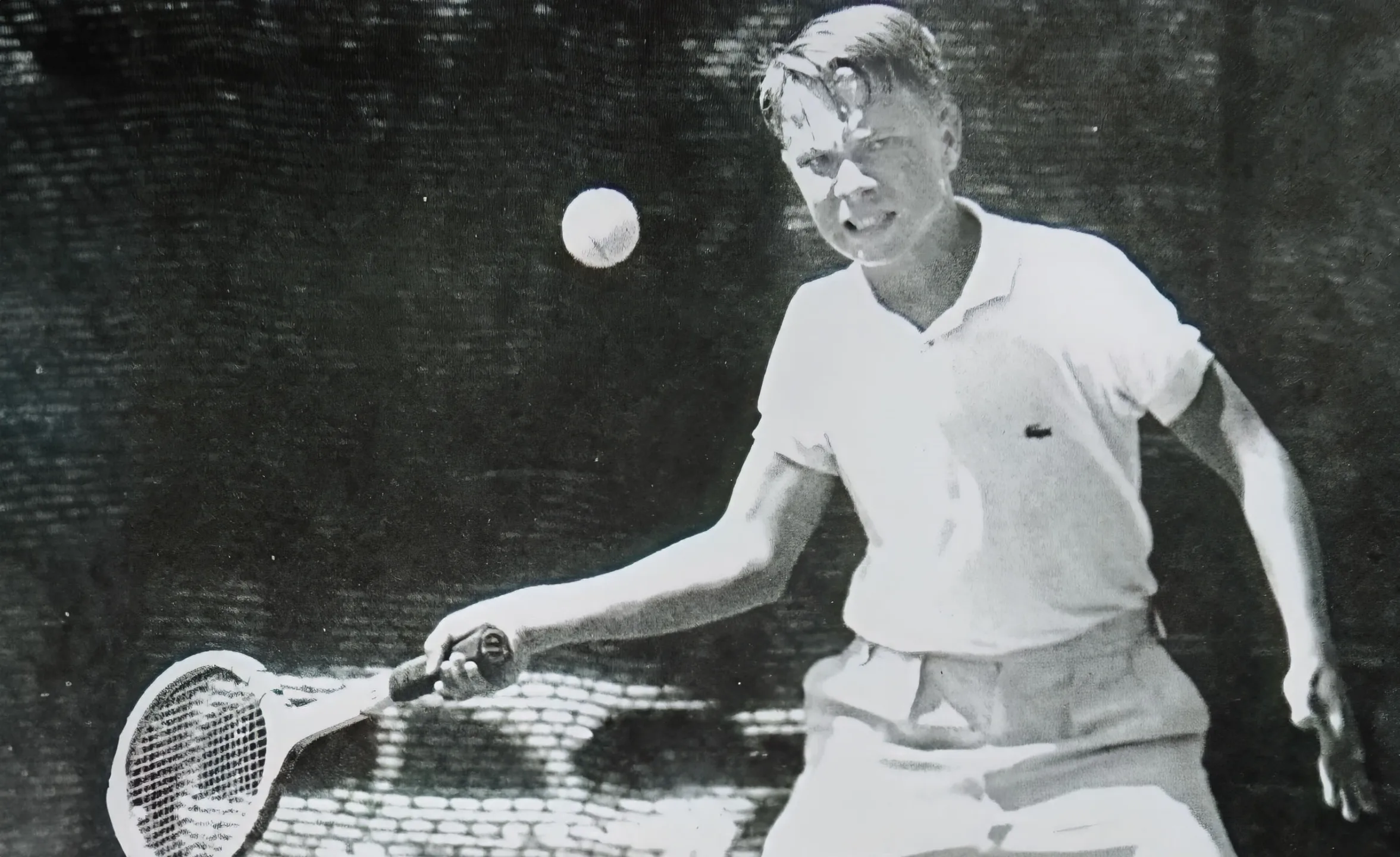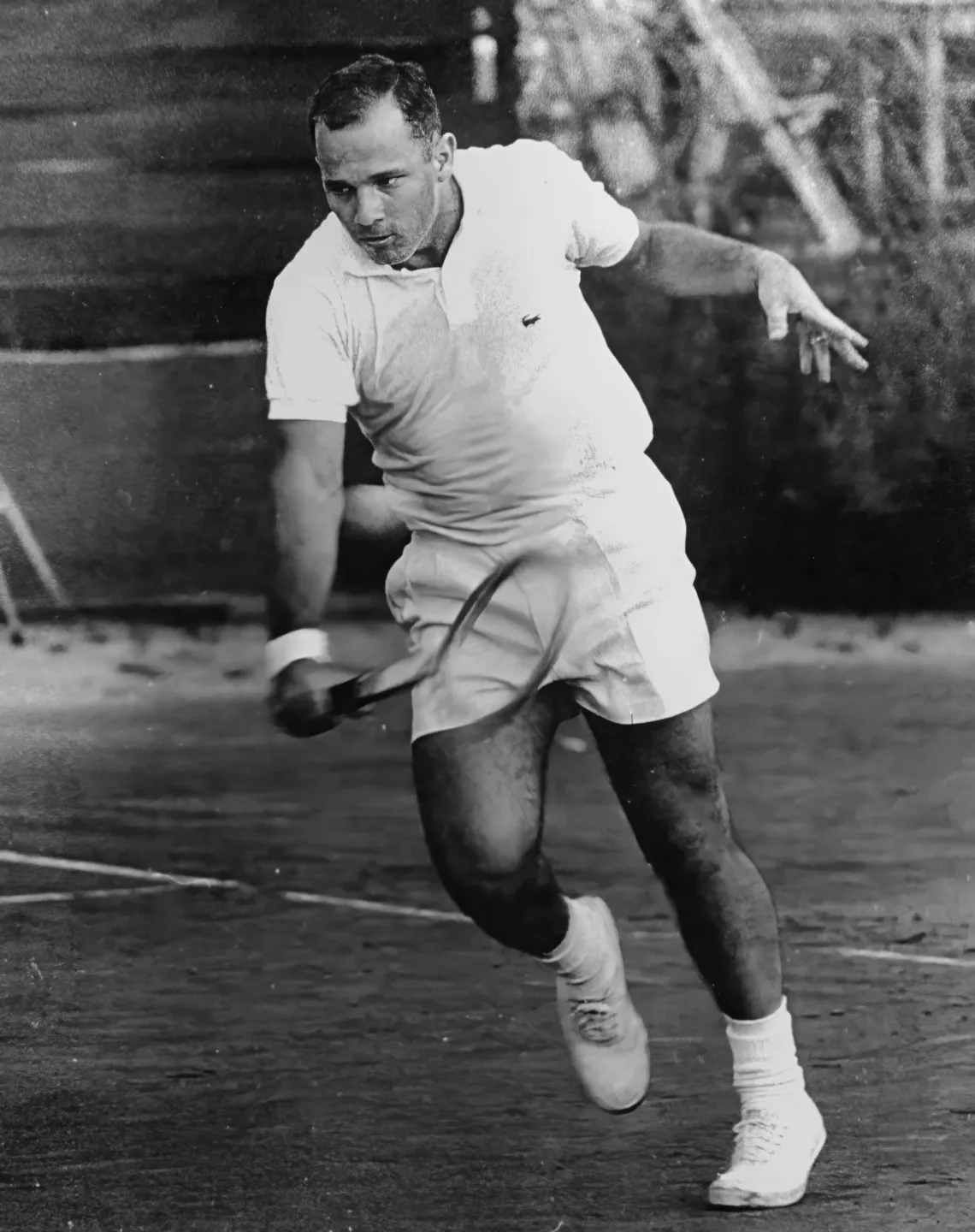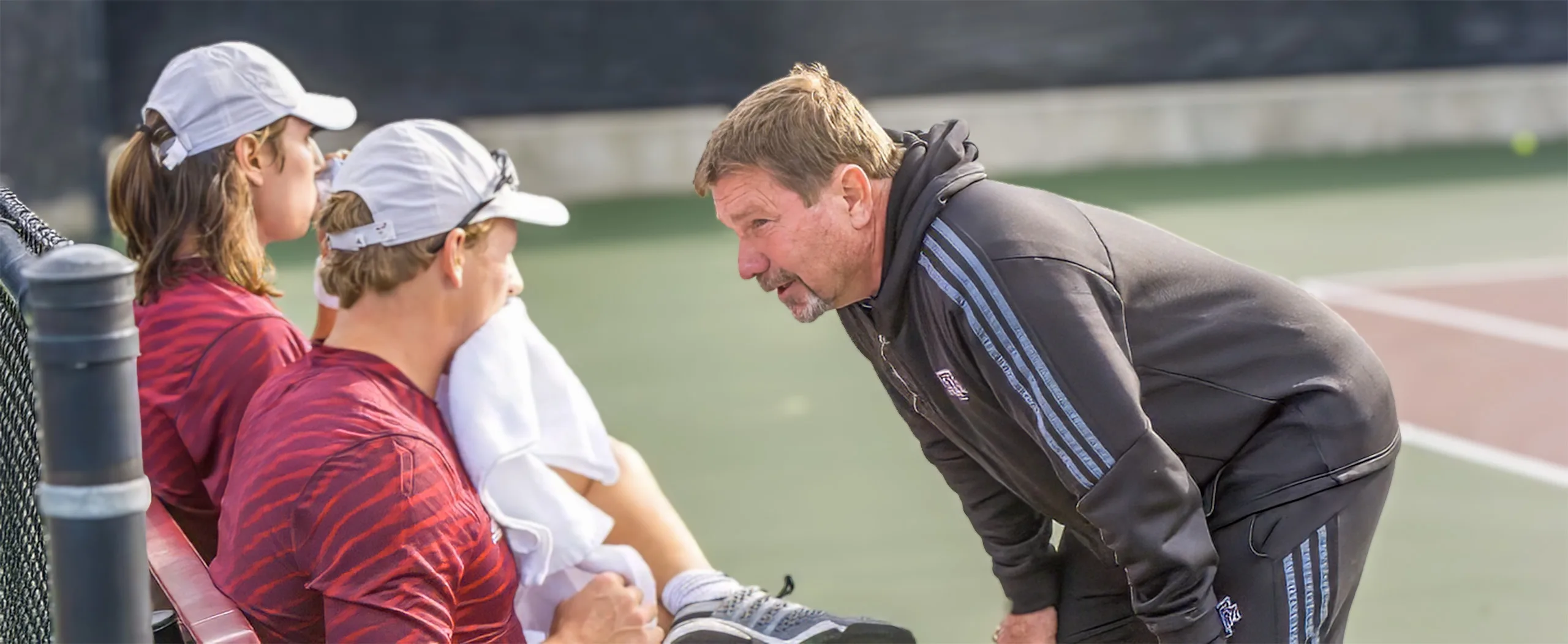Story by Ron Cobb
Special to the St. Louis Tennis Hall of Fame
In anticipation of the 2024 opening of the new St. Louis Tennis Hall of Fame at the Armory, 2016 inductee Ron Cobb has written a “What’s Up With” feature on every living Hall of Fame member. Ongoing, he is also writing regular features about the Hall of Fame and the Armory. And you can expect stories and other media about all our inductees, living and in memoriam.
What’s Up With … Bob McKinley
In anticipation of the 2024 opening of the new St. Louis Tennis Hall of Fame at the Armory, 2016 inductee Ron Cobb will be writing regular “What’s Up With” features on Hall of Fame members and updates about the Hall of Fame.
Bob McKinley was about 9 years old and sitting with his parents at the Armory watching brother Chuck McKinley play in the Boys 18 Indoor. Bob remembers repeatedly being jabbed in the side by his dad.
“How’s he doing? How’s he doing?” Charles McKinley would ask.
Living in St. Ann, the McKinleys weren’t your typical tennis family. Charles was a union pipefitter. Edna was a secretary.
“Neither of my parents knew how to keep score,” Bob says.
Chuck, nine years older than Bob, got into tennis almost by accident. He was playing ping pong at a YMCA when Bill Price noticed him. As Bob recalls, Price approached Chuck and said, “Hey, you’re pretty good at this. Would you like to join our ping pong club?”
Price was renowned as a coach who used ping pong as a pathway to tennis. Chuck took the path and it led to him winning Wimbledon in 1963. For Bob, the same path led to him being ranked No. 1 in the nation in the 18s, captaining a national championship team at Trinity University, and then, as Trinity’s head coach, making it to the NCAA final two times and being named NCAA Coach of the Year.


Bobby left, Chuck right
It all happened because Chuck led the way.
“With my parents, it was a foreign game to them,” Bob said. “I was into other sports as well. I don’t think I’d have ever gone to tennis if it hadn’t been for Chuck. He was kind of my boyhood idol, looking up to him and wanting to do things like he did.”
For a long time, Bob liked being known as Chuck’s brother.
“I reveled in it, but eventually it became a burden,” Bob said. “It got to be a little old when they said, ‘Oh, yeah, Bobby McKinley, that’s Chuck’s younger brother.’”
Besides Chuck, Bob had two sisters. They all are gone now – father, mother, Chuck and sisters Betty and Marilyn. Bob and wife Anna live between the towns of Elgin and Bastrop, Texas, about 25 miles outside of Austin.
Between Bob and Anna, they have seven children and 10 grandchildren. Bob’s son Seth is the sports marketing manager for Babolat and scored a coup when he signed Carlos Alcaraz to a contract. Another son, Sean, runs a junior program in Austin.
Bob has been retired for about seven years after a 10-year stint as assistant tennis coach at Texas A&M. He spends his time with activities at his church and with golf, although he cut back after admitting to himself that he couldn’t master the game. He also streams Cardinals games, “even when they’re doing bad.”
Although Bob was on his way to becoming No. 1 nationally in the 18s, competing around St. Louis wasn’t a total breeze. There was a guy who gave him trouble – Leo Estopare of Roosevelt High.
So it was quite a relief when Bob, playing for Pattonville High, defeated Leo in the state championship match in 1967, ending Leo’s bid for a four-year sweep as state champion.
“Leo was my nemesis,” Bob said. “That was one of the few times I beat him up to that point.”
When it came time to choose a college, Bob decided on Rice. But Chuck, a Trinity alum, asked for a favor – please take a visit to Trinity and coach Clarence Mabry.
“He said, ‘I owe it to Clarence. He’s done so much for me. Just take a visit and if you don’t want to go there, that’s fine.’”
Bob took the visit, “and I fell in love with the place, fell in love with Clarence, and decided to go there. Obviously it was a great decision.”
Bob joined a line of St. Louis-area players who went to Trinity, including Cliff Buchholz, Rod Susman and Frank Conner. While Bob was at Trinity, the team finished 3, 2, 2 and 1 nationally. The 1972 team included Dick Stockton, Brian Gottfried and Paul Gerken.
Once Chuck and then Bob got to Trinity, their relationship with Bill Price pretty much ended.
“Neither Chuck or I would have gotten where we did without him,” Bob said. “On the other hand, he was a very tough taskmaster and could be very cruel at times. I’ll never forget when I got to the final of Kalamazoo in boys 16s and I lost to Erik van Dillen, and after the match Bill got me in the hotel room and ripped me up one side and down the other, saying I was worthless and he didn’t know why he was wasting his time with me. That’s the kind of relationship we had, and Chuck had it as well.”
After Trinity, Bob went to the pros and reached No. 50 in the world. But after only a year and a half on tour, he got a phone call from Clarence Mabry, who told him he was going to retire and he wanted Bob to take his place as the Trinity coach. Bob has mixed feelings about his decision to take Mabry’s offer.
“I won’t say I have a regret, I just wonder what could have been. I felt like I was getting better. At that time there were guys that I was very competitive with, including my two teammates, Gottfried and Stockton. We were about at the same level as Roscoe Tanner and a few others that I had beaten who ended up in the top 10 in the world.
“I would have liked to see if I could have achieved that as well. On the other hand, I wouldn’t trade the experiences I had as a coach in tennis.”
Bob was at Trinity for 10 years, then worked several jobs including stints as a teaching pro at McFarlin Tennis Center in San Antonio and as director of the John Newcombe Tennis Academy in New Braunfels, Texas, where he coached two-time major champion Li Na.
During this time, Chuck was working as a stockbroker in New York City. Eventually he moved to Dallas because he didn’t want his boys to go to school in New York.
Because Bob and Chuck were separated by so many miles for so long, they didn’t see each other often.
“Except for the distance, he was my mentor and sometimes he’d make me mad because he was trying to tell me what to do all the time. On the other hand, I looked to him for advice, both for my tennis game and with decisions in life.”
It was while he was living in Dallas that Chuck was diagnosed with a brain tumor.
“I would say he battled that tumor for a year and a half to maybe as long as two years,” Bob said. “There was a brief period where we thought it was going to shrink and go into remission, but that didn’t last long.”
One day Clarence Mabry went to Bob and said he needed to go see Chuck.
“I said, Coach, I’m pretty busy right now and it’s hard for me to get away.’ He said, ‘I don’t care how busy you are, you need to go see your brother.’
“So I did, and I spent several days with him. One of the things we did while I was there is we sat down and he had a tape of his match in the Wimbledon final. He commented on it and it was wonderful, and the last day I was there he went into a state where he couldn’t communicate anymore. He lived after that for another four or six months, but he was out of it.
“But thanks to Clarence, I was able to spend those last few days … to have the opportunity I had at the end was pretty special.”
Chuck died on Aug. 11, 1986.
Bob McKinley was inducted into the St. Louis Tennis Hall of Fame in 1996.

